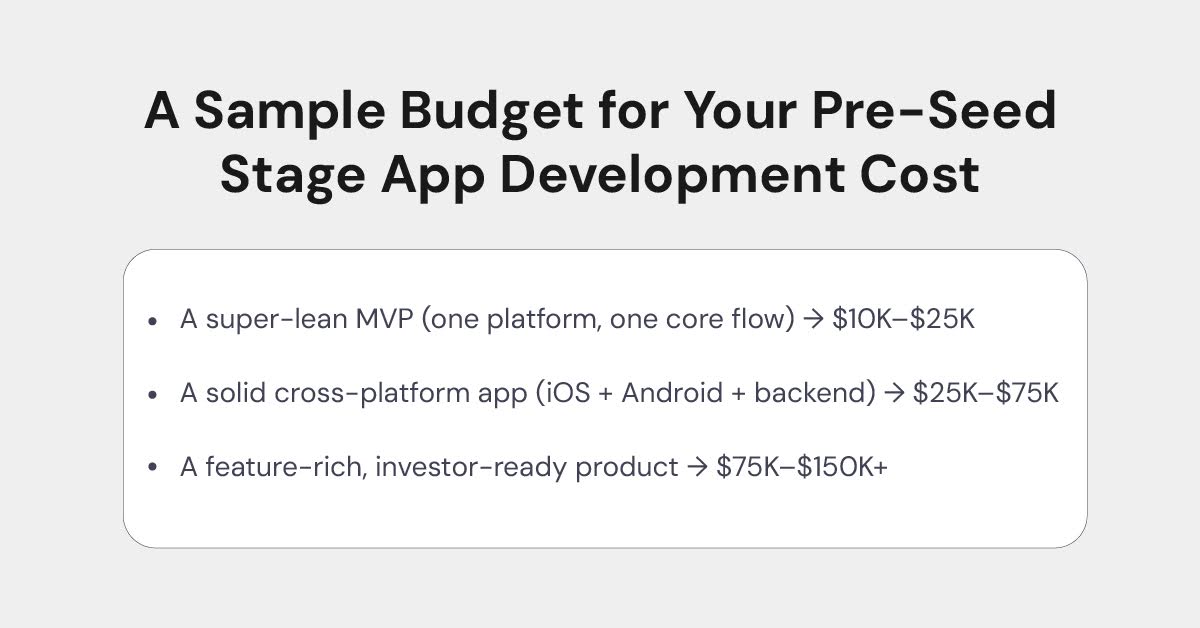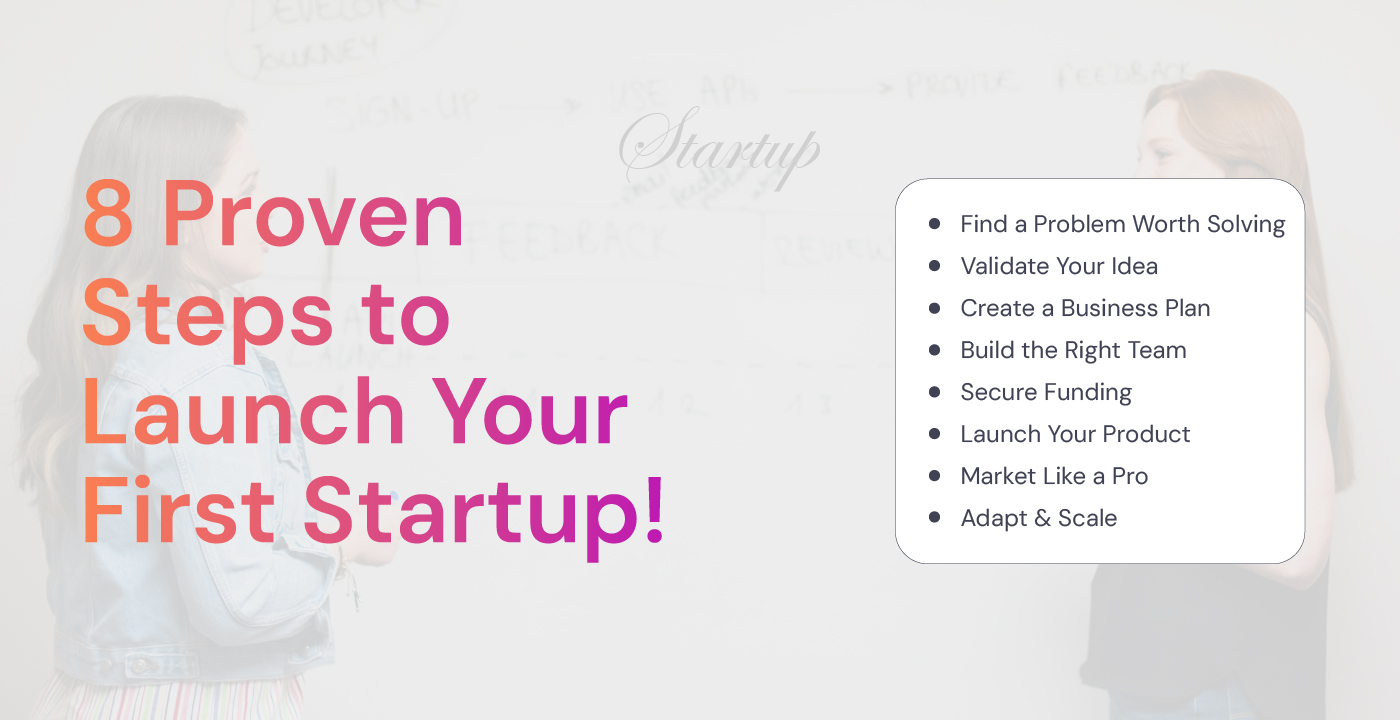Every founder hits that same wall.
You have got the idea, maybe even mockups. You have pitched it to investors and shared it with friends, and everyone is excited.
Then comes the question that stops the room: “So how much will it cost to build?”
There is no single answer, but there’s definitely a smart way to think about the app development cost.
We have helped dozens of pre-seed startups figure out how to build their first app without draining their entire round. And the truth is, you don’t need to find the cheapest developers or skip features.
All you need is clarity, priorities, and building just enough to prove your concept fast.
We have prepared this detailed guide to help plan your app development cost at the pre-seed stage, avoid the hidden costs of app development, and create a startup app budget that helps you grow, not crash.
Why Does Pre-Seed Budgeting Feel So Hard?
At pre-seed, you don’t have unlimited funds. You don’t have a product yet. And you can’t afford to waste six months chasing perfection.
But you also can’t ship garbage. Investors and users can smell rushed work a mile away.
That’s why your pre-seed budget app strategy has to balance two things:
- Speed. Get something in users’ hands fast.
- Quality. Build a foundation that won’t collapse once you scale.
Your app development cost plan should reflect that balance.
You are not budgeting for a “finished product.” You are budgeting for proof. Proof that people want what you are building.
We do it in 6 steps!
Step 1: Define What You are Actually Paying For
Before you throw numbers around, pause.
Ask one question:
What’s the one thing this app must do really well?
That’s your core value.
Build only that.
Every dollar outside that core is a luxury and at pre-seed, luxuries kill startups.
Most founders blow 40-50% of their app development cost on features users never even test. Don’t make that mistake. Build an MVP that does one thing brilliantly.
If you are still defining what your users actually need, take a step back and do focused market research for product development before you spend a single dollar on code.
Step 2: Understand Where the Money Really Goes
When you build your startup app budget, think in layers, not line items.
There are four major cost zones every founder needs to plan for:
- Product & Design, where your idea becomes something clickable. A solid design phase saves you months of confusion later.
- Development, your biggest spend. Build the core first, not the dream version.
- Quality Assurance (QA), the most underrated part of speed. Bad QA means technical debt, user churn, and investor embarrassment.
- Launch & Learn, hosting, analytics, and early marketing. It’s not just “build it and wait.”
The Hidden Costs of App Development No One Tells You About
Every founder learns this the hard way. Ignore these, and your tidy startup app budget will explode halfway through.
Expect at least 10-15% of your app development cost to go toward these hidden gremlins. A Clutch report found that projects without a proper discovery phase face 20-60% more scope creep and rework, and that unexpected requirement changes are 30-40% more likely.
That’s why you need to be mindful of these hidden costs and plan accordingly:
Refactoring
Your MVP may not hold up once real users start using it. Set aside time and budget to fix and improve it.
Tool Subscriptions
Design software, analytics tools, and CI/CD pipelines all come with ongoing costs that can add up quickly.
Scope Creep
Every “quick change” or extra feature request usually means more work and higher costs.
Post-Launch Bugs
No app is perfect at launch. Plan for fixes and updates after release.
Step 3: How Much Should You Actually Budget?
Every founder wants a number.
We can give you an honest answer:

But these numbers only make sense when your app development cost is guided by priorities, not perfection.
You can waste $20K easily if you don’t define the scope. Or you can build something investors love with $15K if you focus. When you are at pre-seed, focus is everything. Startup literature shows that early-stage failures are driven by misreading customer needs and running out of runway.
At pre-seed, your budget is not about “cheap”, but only clarity per dollar.
Step 4: Build Smart, Spend Smart
Saving money doesn’t mean hiring the cheapest team. It means hiring a team that builds efficiently.
The Doerz Tech team always tells founders this:
“Tools don’t make you fast, process does. Trust the process.”
The right stack can cut your app development cost by 20-30% just by reducing setup, testing, and handoff friction. Pick tools that fit your stage:
- React Native or Flutter for speed and cross-platform flexibility.
- Firebase or Supabase to skip backend setup.
- GitHub Actions for automated deployment.
- Figma for design collaboration.
Step 5: Budget for Learning, Not Just Launching
The worst mistake is thinking launch is the finish line.
It’s actually the starting point of learning.
Your startup app budget must include post-launch testing and iteration.
User feedback, data tracking, and continuous updates are how you turn a product into a business.
Fast learning is your real ROI.
And when you move into design, make sure your UX actually reflects how people behave. Understand design for user behavior using the psychology of UX to make every dollar in your design phase count.
Step 6: Keep a Clean Money Loop
This is the founder rule we live by:
“If you can’t measure it, you can’t manage it, and if you can’t manage it, you will run out of money.”
Budgeting for app development costs is all about control. It gives you confidence when you talk to investors. It shows discipline, not desperation. Create a simple monthly tracker for:
- What did you plan to spend
- What you actually spent
- What you achieved
Build with Intention, Not Panic!
The pre-seed stage is a sprint, but it’s also your foundation.
If you build with chaos now, you will spend your Series A cleaning it up.
If you build with focus, you will scale faster than teams with ten times your budget.
Your app development cost should feel like an investment.
Budget smartly, stay lean, and remember:
Speed is nothing without direction.
Quality is nothing without momentum.
Balance both, and you will win.
We help early-stage founders turn ideas into scalable MVPs: fast, clean, and investor-ready.
If you are figuring out how to stretch your preseed budget app wisely, we can help you map your exact roadmap and hidden costs before you spend a single dollar.









